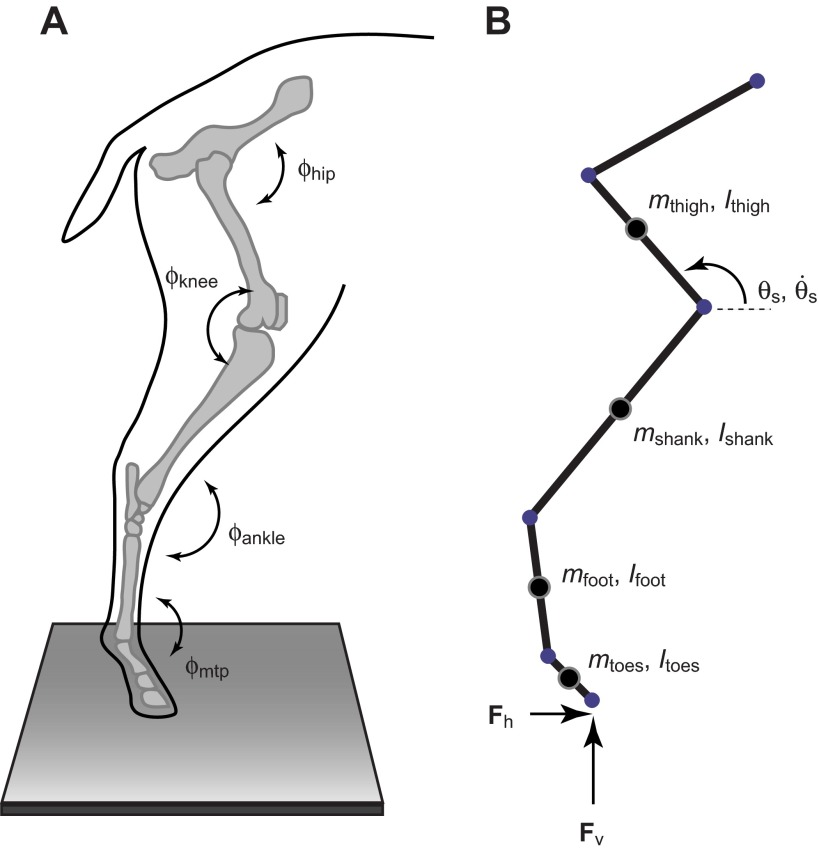Fig. 1.
Schematic diagram of the linked segment model used to calculate joint angles, moments, power and work. Angles (ϕj) at the hip, knee, ankle and metatarsophalangeal (MTP) joints were determined from the relative orientations of adjacent segments (A). Net joint moments were calculated by applying the measured vertical and horizontal ground reaction forces (GRFs: Fv and Fh) to a four-segment, sagittal-plane model of the goat hindlimb (B). The masses and moments of inertia of each segment (ms and Is) were scaled to the anthropometric dimensions of each goat based on experimental data from one goat of known size and body mass. Joint moments and powers were estimated at segment angles and angular velocities (e.g.  and
and  ) throughout the stance phase. The model shows the trailing limb of a galloping goat at 75% of the stance phase.
) throughout the stance phase. The model shows the trailing limb of a galloping goat at 75% of the stance phase.

